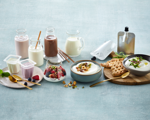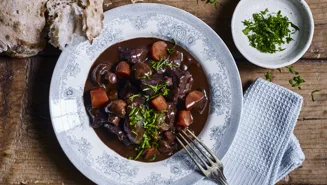
No, cottage cheese is not lactose-free. Its lactose levels are low in general, but compared to other cheese types like gouda, brie, and cheddar, it is on the higher end of the scale.
It is a fresh cheese like cream cheese and ricotta, meaning it does not age or mature before it is ready to eat. The ageing process is one way for cheeses to break down lactose, and since cottage cheese does not age, almost no lactose is broken down.
Is cottage cheese high in lactose?
No, cottage cheese is not high in lactose. It is neither lactose-free nor high in lactose, but, as mentioned, compared to aged cheeses, its lactose level is on the higher end of the scale.
Cottage cheese contains about 3-4 grams of lactose per 100 grams depending on the specific product, brand, and production method. Always check the label to make sure how much lactose a certain product contains. What constitutes lactose-free may change from one country to another, so it is important to check the rules and regulations.
If you want to know more about lactose in cheese, you should check out our cheese lactose chart and our article about cheese types with higher levels of lactose.
How to make lactose-free cottage cheese?
Making cottage cheese lactose-free involves a specialised production process.
- As with regular cottage cheese, milk is coagulated to separate curds and whey. Most of the lactose is found in the whey, which is the liquid part of milk.
- Once the milk has been curdled, the whey is drained off. What remains are the curds, which contain lower amounts of lactose.
- These are then treated with the enzyme lactase to break down any remaining lactose.
- These curds do not have a noticeable flavour. So, to give cottage cheese its distinct and flavourful profile, the curds are then mixed with a "dressing" made of cream (or milk) and salt.
This dressing is also treated with lactase to break down its lactose content to make sure the final product is lactose-free.
Can you make lactose-free cottage cheese at home?

Yes, you can make lactose-free cottage cheese at home. When using lactose-free milk, bear in mind that it is usually more heat-treated than regular milk, making curdling a bit more challenging but not impossible.
- To begin, gently heat the lactose-free milk to around 40°C
- Then add an acidic ingredient like vinegar or lemon juice. Watch the magic happen as the milk curdles, forming that lumpy goodness we love.
- The curd and whey will separate after allowing the mixture to sit for a few minutes.
- Next, strain the curds from the whey using a cheesecloth and give it a gentle rinse to remove any lingering whey.
- Rinsing the curds is optional – if you prefer a tangier cheese, skip this step.
- Once you have drained off the excess liquid, consider adding lactose-free cream and a pinch of salt. This will ramp up the taste, giving it the creamy flavour that is characteristic of cottage cheese. You can also add fresh herbs or other flavourings.
If you are interested in this process, you can read more about lactose-free milk and cream in our articles ‘What is lactose-free milk?’ and ‘Does cream have lactose?’.
Delicious lactose-free cottage cheese with the same taste
Cottage cheese is a cheese favourite of many. And the lactose-free version has the same delightful, well-known taste and texture as its regular counterpart.
Thanks to its versatility as well as its mild, slightly tangy flavour and creamy yet crumbly texture, it is perfect in both sweet and savoury cuisines. Blend it in sweet smoothies, mix it into pancake batter for extra fluffiness, layer it in a fruity parfait, use it as a topping for fruit-based pies or tarts, or use it in muffins or cakes for added moisture.
You can also spread it on toast, mix it in salads, make it into a dip with herbs and lemon juice, spoon over roasted vegetables or baked potatoes for a fresh topping, or use it as a filling for stuffed meat, vegetables, or pasta. The delightful taste and texture, coupled with its versatile nature, make lactose-free cottage cheese a go-to choice for many.









































